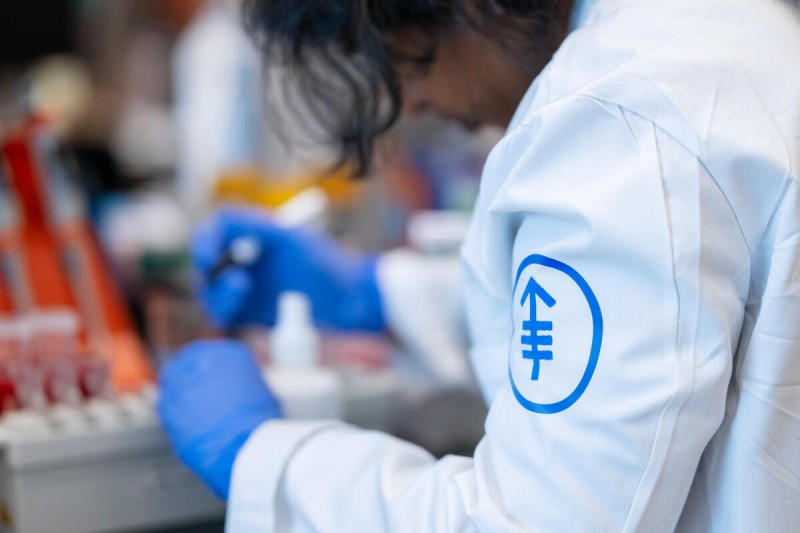
New research from Memorial Sloan Kettering Cancer Center (MSK) investigates how pancreatic cancer cells regulate their genome to avoid immune attack; shows promise against glioblastoma in mouse models; and develops a new method to study cancer evolution.
How pancreatic cancer cells regulate their genome to avoid immune attack
A study led by researchers at MSK is providing insights into how cancer cells avoid drawing an attack from immune cells. Normally, the innate immune system — the body’s first line of defense against viral-like threats — detects whether a cell is self or foreign. This arm of the immune system can be triggered when a cell’s genome is disrupted. One such disruption takes the form of activated retrotransposons, which are genetic elements that can move around the genome. In cancer cells, for example, they can form double-stranded RNAs (dsRNAs) that mimic a virus and invite an immune attack.
A new study — led by co-corresponding authors Benjamin Greenbaum, PhD, and Siyu Sun, PhD, a postdoctoral researcher in the Greenbaum Lab — provides insights into how pancreatic cancer cells accommodate these active retrotransposons without triggering the innate immune response. The authors show how cancer cells evolve to adapt to the activation of dsRNA-making retrotransposons in order to avoid this attack and survive, and how this changes with genetic context. The authors found an antagonism between two types of retrotransposons, LINE-1 and SINEs. In one context, the activation of LINE-1 elements keeps the dsRNA-forming SINEs in check and prevents immune activation. In the absence of LINE-1, tumor cells have found a different way to eliminate SINEs, by engaging the ADAR1 protein. The team validated their findings in a dish, documenting that blocking either LINE-1 or ADAR1 reduced tumor growth. Read more in Immunity.
Compound shows promise against glioblastoma in mouse models
New therapies are urgently needed against glioblastoma, an aggressive and incurable brain tumor that accounts for about half of all primary brain tumors. The five-year survival rate for the disease is just 7%, according to the National Brain Tumor Society.
Now an MSK-led research team has identified a compound called gliocidin that they believe may have the potential to improve the survival of patients with glioblastoma. In both genetic mouse models of glioblastoma and patient-derived tumors maintained in mouse brains, gliocidin was able to selectively kill cancer cells while sparing healthy cells. The compound targets a vulnerability in the cancer’s ability to make purine — a building block of guanine, a nucleotide the tumor cells need to survive. This nucleotide imbalance causes stress to the tumor cells that ultimately results in cell death. Moreover, the study — which was led by postdoctoral fellow Yu-Jung Chen, PhD, and overseen by Luis F. Parada, PhD, Director of MSK’s Brain Tumor Center — found that combining Gliocidin with the chemotherapy drug temozolomide further increased tumor cell death and improved survival in laboratory models. “We discovered gliocidin by screening a large library of compounds for those that would selectively kill glioblastoma cells,” Dr. Parada says. “It can successfully cross the blood-brain barrier to reach tumors, and had low toxicity in animal studies, making it a promising candidate for further research and development.” Read more in Nature.
When it comes to mutations, order matters, study finds
Understanding how mutations occur and evolve over time is crucial for developing effective treatments against cancer. In a recent study, MSK researchers developed a new approach to model the evolutionary processes in cancer in animal models.
The research team — led by first author Robert Bowman, PhD (now at the University of Pennsylvania), and overseen by senior author Ross Levine, MD — focused on a specific gene called Flt3, which is involved in leukemia. After introducing mutations in Flt3 in mice, they found that the order in which mutations occur can have a significant impact on the behavior of cancer cells.
The researchers additionally developed a reversible approach, in which they could revert the mutated genes back to their normal state. This led to a rapid regression of leukemia, with different patterns of cell differentiation depending on the mutations present. Overall, the study offers a promising approach to studying cancer evolution and opens up new possibilities for investigating the mechanisms of cancer transformation and identifying potential targets for therapy. Read more in Cancer Cell.